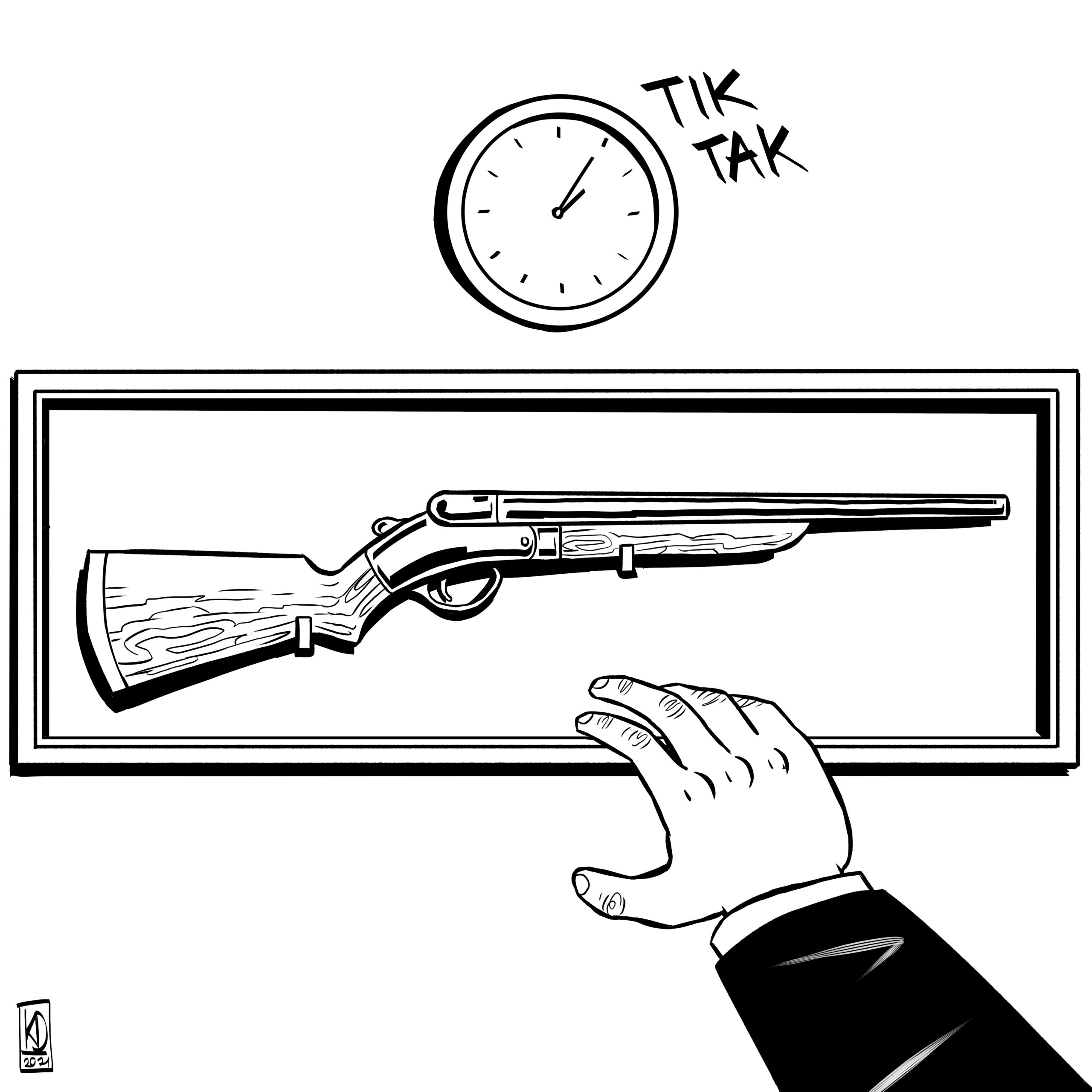A communication crisis just like any other can generally be predicted. There are times when it happens very accurately. The trouble is that not everyone is able to look at the environment in such a way as to foresee the symptoms of approaching difficulties. Even worse, there are underlying forces and inertia in corporate environments that cause the organization to simply not want to see these warning signs.
If there’s a shotgun hanging on the wall in the first scene, someone is bound to fire it by the end of the play, says a principle of play construction attributed to Chekhov. And while it applies to fully fictionalized realities such as plays or film scripts, it often works in real life too. Not least in the world of media messages, created narratives and multilayered planned communication activities. More often than not, consciously or unconsciously, future events are signaled in advance, more or less explicitly and by various parties. Any examples?
The nervousness that can be seen in the tweets of a board member of a large corporation, which are completely unrelated to business activities whatsoever, may be related to a difficult situation within the company and herald the announcement of negative market news in the near future. The unusually high number of publications of positive or neutral press releases on various trivial topics very often signifies the sender’s attempt to bore the market and divert attention from the really important things. The appearance of gossip or unusual frankness and openness in the statement of a usually secretive expert is sometimes a so-called trial balloon or smokescreen. Questions that are asked at press conferences or meetings of competitors and investors usually give a pretty good picture of the directions where public interest in our company is heading. The narratives that depict industry A can be transferred in an almost identical pattern to industry B. Finally, the effects which the observed entity’s communication activity has had on its environment may be repeated under similar conditions in slightly different circumstances.
Keeping with the metaphor used in this text, unfortunately there is no single, certain mechanism outside the theatre for distinguishing Chekhov’s shotgun from other, irrelevant elements of the play’s setting. Indeed, in many cases, even the final shot does not yield confidence in its source. Nevertheless, careful, constant observation, knowledge of trends in the environment, historical analysis and expert knowledge can draw far-reaching conclusions from these seemingly unimportant details, even in a reality that may be far more complex than the best-written play. However, what is imperative here is a systematic approach to constant, intensive observation and analysis of the ‘setting’. Also, this cannot be done from inside the stage, as your eye cannot see itself. This is why experienced directors always have their people in the audience on whom they can always rely for assistance.
At this point, stepping away from the tempting theatrical analogies, it should be noted that coherent communication that is properly managed and rooted in corporate strategy is a tool for greater confidence in management decisions. Also, the correct choice of actions and measures requires not only the creativity of the team and the far-sightedness of the leaders, but also the expert guidance of a professional sitting nearby.


